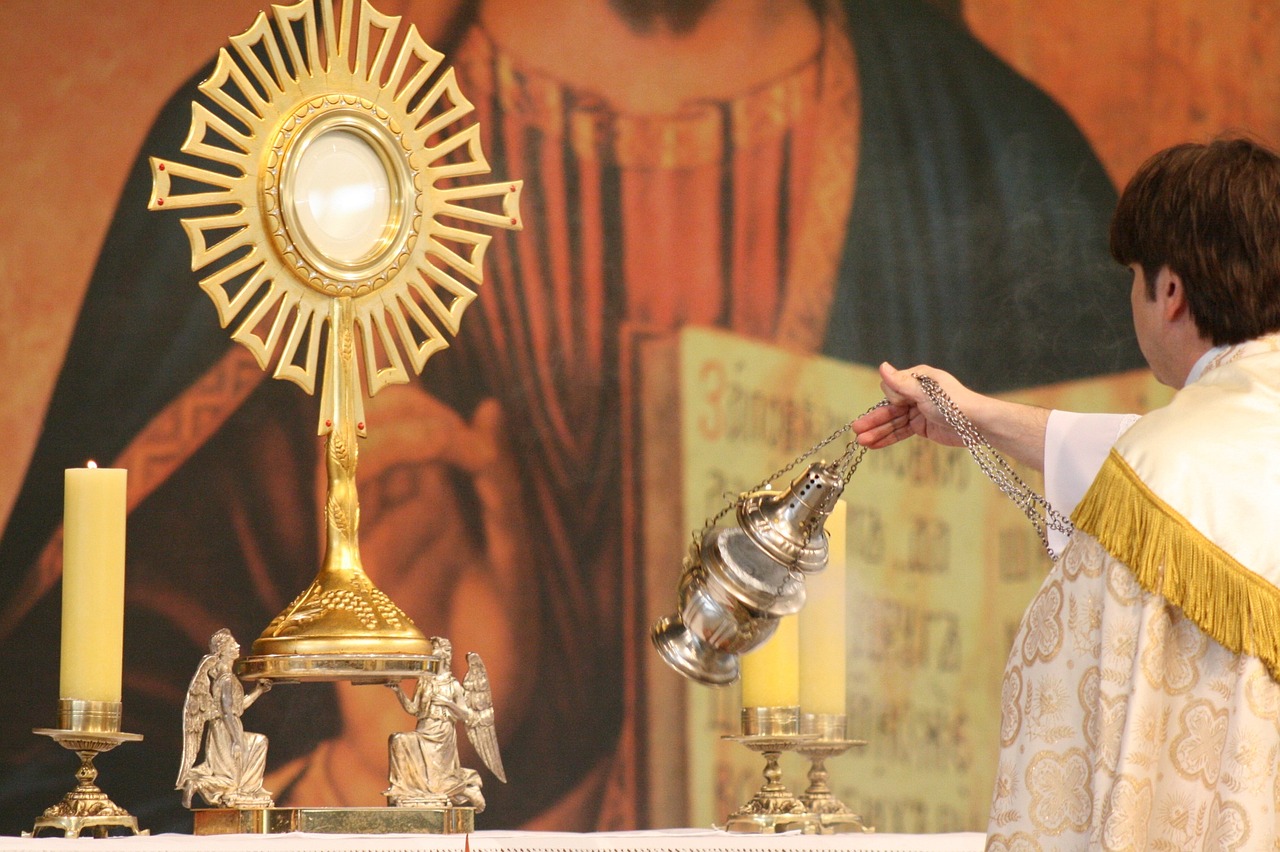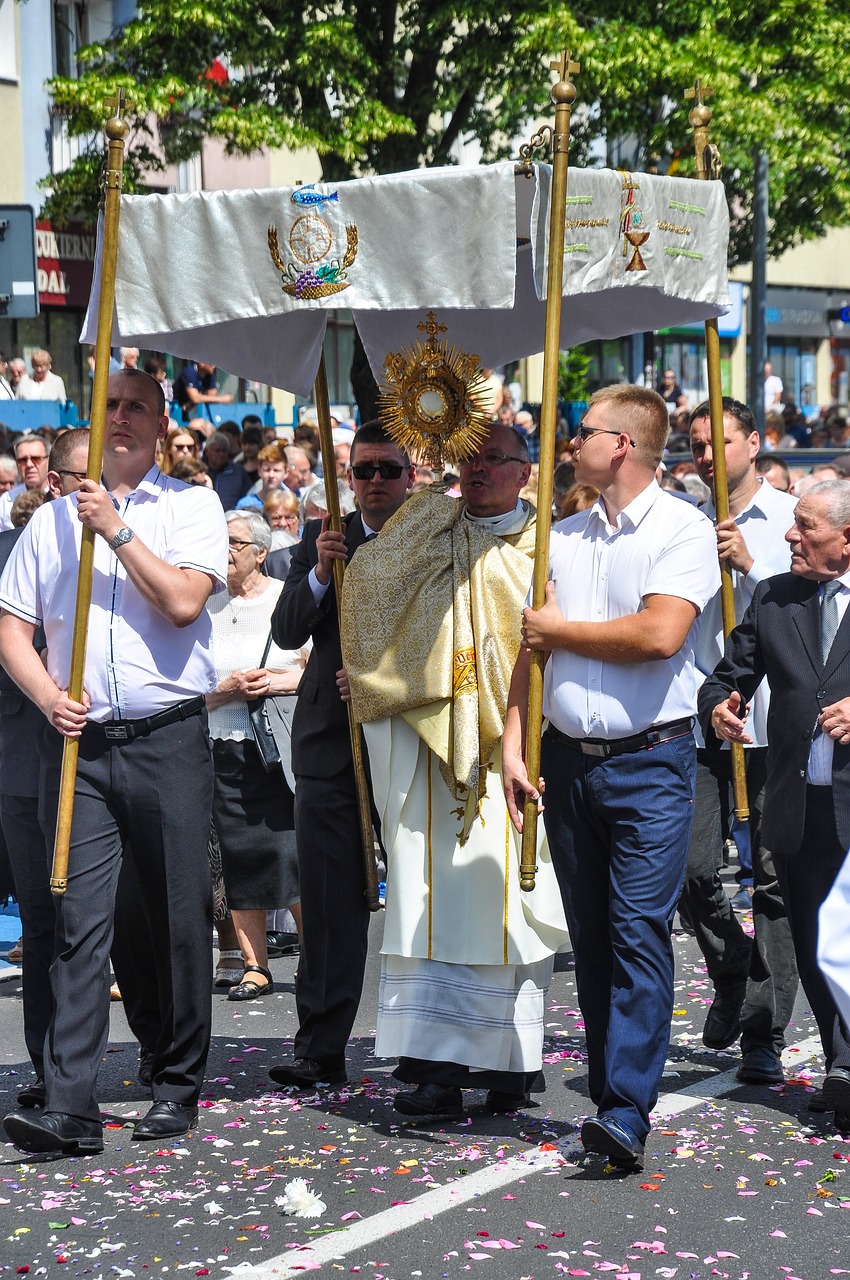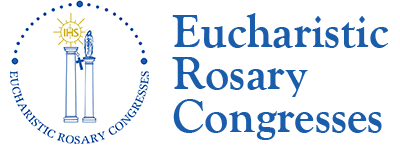Eucharistic Adoration is a profound Catholic practice, centered on the real presence of Jesus Christ in the Blessed Sacrament. This practice involves the worship and contemplation of the Holy Eucharist outside of the Mass, as Catholic Christians gather to adore and meditate upon the Divine Presence in the consecrated elements. This tradition has a rich history that spans centuries and has been championed by numerous saints, theologians, and laypeople alike.
Historical Roots and Development
The origins of Eucharistic Adoration can be traced back to the earliest days of Christianity – to the days of the Apostles. In the early Church, the reverence for the Eucharist was paramount, and it was reserved for the sick and those unable to attend the liturgy. By the 4th century, there is evidence of the Eucharist being reserved in special chapels for private devotion and the distribution of Communion to the sick.
The practice of formal Eucharistic Adoration, where the Blessed Sacrament is exposed for public veneration, became more prominent in the Middle Ages. Monastic communities played a significant role in nurturing this devotion. The practice of “forty hours’ devotion,” where the Eucharist was exposed for continuous adoration over a forty-hour period. Also known as Quarant’ore in Italian, this practice emerged in Milan around 1530 A.D., and quickly spread throughout Italy and Europe, thanks to the fervent promotion of the practice by saints such as St. Philip Neri. It was often held in a succession of churches over 40 years, but is now more often held in many churches simultaneously.

Prominent Proponents and Advocates
Throughout history, numerous saints and theologians have ardently advocated for Eucharistic Adoration, recognizing its spiritual significance and transformative power. St. Francis of Assisi, for example, had a deep devotion to the Eucharist and encouraged his followers to venerate the Blessed Sacrament. St. Juliana of Liège, who received visions of a moon with a dark spot symbolizing the absence of a feast dedicated to the Eucharist, contributed to the establishment of the Feast of Corpus Christi.
However, it was St. Peter Julian Eymard (1811–1868) who played a pivotal role in reviving and popularizing Eucharistic Adoration in the 19th century. He founded the Congregation of the Blessed Sacrament and dedicated his life to promoting devotion to the Eucharist. St. Eymard’s efforts laid the foundation for the modern practice of perpetual adoration, where the Eucharist is continuously exposed for adoration in chapels around the world.
Origins and Contemporary Practice
The practice of Eucharistic Adoration finds its origins in the thoroughly Catholic belief that the consecrated Eucharist truly becomes the body, blood, soul, and divinity of Christ during the Mass. As the understanding of transubstantiation developed, the need to honor and adore Christ’s presence outside of the Mass became more pronounced. Thus, the practice of Eucharistic Adoration emerged as a way to extend the experience of encountering Christ in the Eucharist beyond the confines of the liturgy.

In contemporary times, Eucharistic Adoration remains a cornerstone of Catholic devotion. Many churches and chapels offer regular times for adoration, ranging from short periods to perpetual adoration. The faithful gather to spend time in quiet contemplation, prayer, and worship before the Blessed Sacrament, seeking intimacy with Christ and drawing strength from His presence.
Eucharistic Adoration continues to be a source of spiritual nourishment, solace, and inspiration for Catholics and other Christians across the world. Most importantly for us, it is a key aspect of the Eucharistic Rosary Congresses as we gather before our Eucharistic Lord during this week of prayer. As it has for centuries, this practice invites the faithful to deepen their relationship with Christ and find profound joy in the intimate encounter with the Divine.
